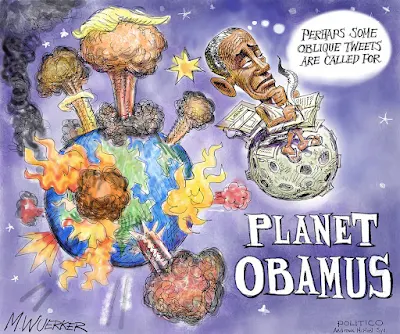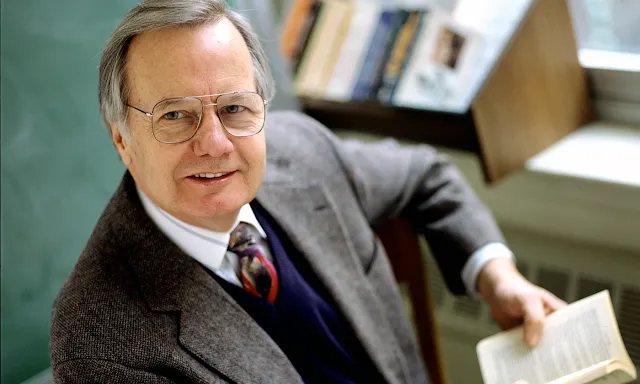It's begun, and it has nothing directly to do with Marxist theory or external or unpredictable forces. The Immiseration of America is starting to happen now because of policies and actions taken by the Republican administration and the Republican Congress, aided and abetted by what must accurately be called the Republican Supreme Court.
Immiseration in this sense means what it sounds like: making people's lives a misery by making them poorer, more vulnerable and less able to support a decent life.
The most recent Bureau of Labor Statistics numbers on employment--which may be the last honestly assessed numbers we are likely to get for the foreseeable future--showed that most businesses are not hiring and many are shedding jobs. Heather Long's analysis in the Washington Post begins by noting that large revisions in the job data, as happened this time, typically occur during a recession or just as one is starting. Long, along with Paul Krugman and others, see this downward plunge in the job market as chiefly a result of the US tariffs threatened and exacted, but the random kidnapping of non-citizen workers has also created chaos in such major sectors as farming and construction. Unemployment insurance claims are up, and the GDP has slowed to less than half of what it was last year.
At the same time, economists such as Jared Bernstein in the New York Times note that the tariffs "are now clearly fueling inflation" in the prices of food, clothing, home appliances and cars. The prospect is for the kind of "stagflation" (stagnant economy with inflation) that bedeviled the 1970s, though that time the causes were the oil embargo and then the massive price hikes in oil from foreign sources. This time it is all due to Chaos.
There is another difference this time, a very disturbing one. Though wealth inequality was increasing, the US had a vibrant consumer economy, and something like 60% of Americans had middle class incomes in the 1970s. But now the concentration of wealth in the top 10% and top 1% is overwhelming that economy, as the middle class has shrunk by at least 10%. Right now, according to Long, "The economy is increasingly dependent on a small sliver of superstar companies and wealthy consumers to stay afloat because these are the only firms and families able to withstand the tariff onslaught."
So while the stock market is driven by big tech companies besotted with the growing AI bubble, fully half the consumer economy is driven by spending by the very rich, the top 10%. (To suggest the difference, half of the consumer economy in the 1970s was accounted for by mostly middle class spending in shopping malls alone.) While overall consumer spending is declining, this dominance masks the real trouble the non-huge companies are in, and especially the plight of the non-rich 90% of families and individuals.
The immiseration of America will target them--and the further down the wealth continuum a family or a person is, the more misery is likely. But as gloomy as the general economy data may be, it will not truly reflect the economic misery--not only because data from the federal government can no longer be trusted--but because spending by rich people and rich tech companies will make things look better than they are for most Americans.
As I mentioned in an earlier post, the Republican Congress tax breaks for the wealthy and immiseration of everyone else bill accelerates a trend has been going on for decades, greatly aided if not caused by Republican policies such as slashing taxes on the wealthy: since 1981, over fifty trillion dollars was redistributed from bottom 90% of Americans to the top 10%. (Although it must also be mentioned that much if not most of the federal money allocated by the Obama administration to save the American and world economies in the Great Recession, and by the Biden administration to re-start the economy after the pandemic shock, ended up in the pockets of billionaires.)
The implied peril in this one fact and trend is simple: if the economy depends so much on the rich who can accommodate tariffs and inflation, there may be less urgent motivation to fix the economy when it primarily hurts--and immiserates--the rest of us.
A further danger--federal deficits are increasing, due partly to insane spending by the not so secret police, the military and other Chaotic agents. But they won't be blamed. What remains of government support for the 90% will be scapegoated. That's a Republican go-to.
And these general trends are only part of the story. While people lose jobs or can't find them, and prices go higher, especially for basic necessities, government support that provided some necessities, made other more affordable, or provided some help in emergencies, is being systematically withdrawn, with programs cancelled or subverted, funding erased or cut, and agencies that provided vital services internally attacked, decimated and corrupted.
In short, if this administration had deliberately set out to immiserate America--to create havoc and misery for most Americans--it could hardly have done a more thorough job.
For the vulnerable middle class inflation is hitting the price of food and clothing and shelter. Seniors and others on fixed incomes are especially vulnerable.
Another basic necessity in today's world is medical care. Soon Americans that get health care insurance through the overwhelmingly popular and successful federal program unofficially called Obamacare will see huge premium increases, and eventually claims and continued membership will become vastly more cumbersome and difficult. Some of us with health insurance related to Medicare have already seen big premium increases--mine is 17% higher.
Americans in the lower 50% and certainly the lowest 10% are hit with the same inflation and employment recession, but more immiseration is being added on. Millions of lower income Americans will lose Medicaid, and because these programs help support clinics and hospitals in smaller and rural communities, the loss of those clinics and hospitals will affect everyone in those communities. Except of course the very rich who can fly anywhere, except perhaps when they need emergency medicine. And this is separate from the crisis in reproductive care and related women's healthcare already caused by draconian state laws and the Republican Supreme Court.
For the last 10%, the Congressional Budget Office estimates that changes in Supplemental Nutrition Assistance (SNAP) and other food assistance programs, such as restricted eligibility and added requirements, will push some 2.4 million Americans off food stamps altogether. The CBO also quantifies the total impact of loss of food support and Medicaid, estimating the poorest 10% will lose about $1200 a year from their already meager incomes, while thanks to new tax cuts for the wealthy, the richest 10% will see incomes increase by some $13,600 a year.
This means less adequate medical care and even food for families, and particularly children. Families and children have suddenly lost other elements of the so-called safety net as well. Many children will no longer have the guarantee of at least one nutritious meal a day in school. Together that means lots of needlessly hungry children. It means that the Republican Congress took food out of the mouths of helpless children to feed billionaires.
Many seniors will no longer have access to nutritious food through Meals on Wheels programs. Social Security is more vulnerable. Housing costs remain high and inflations is likely to particularly hurt renters, while electricity and energy costs for heating and cooling are likely to go up for everyone.
The list goes on. Cuts in day care and other programs that support students, parents, schools and teachers will harm children. The chaos created in the matter of loans for college students may well mean that fewer high school graduates will be able to afford higher education. Access to medical care for veterans is and will be increasingly more difficult due to VA cuts and confusion.
The chaos in the medical system caused by the insane policies of federal health, the depletion and the outright stealing of funds slated for the increasing number and severity of emergencies caused by extreme weather, fire and flood--all outcomes of the climate crisis--can affect families and communities anywhere (and in the next epidemic or pandemic, everywhere.) And the war against immigrants makes the precarious lives of those families even more threatened.
The logic of recession is inexorable: more misery and fewer customer dollars for businesses leads to higher unemployment, and more misery. That also happens to be the logic of inflation. Add to the general trends the specific sectors thrown into chaos by Chaos policies on immigration, foreign aid and so on, as well as union-busting efforts beginning with attacks on government labor unions (with the blessing of Republican courts) that can soon end job protections that very much helped create the American middle class over the past 60 or 70 years.
All of this affects anyone in the 90%. But non-white Americans within it face additional pressures and difficulties. Workers (and small businesses) in specific sectors most affected by capricious tariffs as well as the chaos caused by the fascist ICE campaign also face other unnecessary problems that affect jobs and the existence of these businesses, as well as (for example) the needed construction disrupted and the food missing from grocery stores.
So for a growing number of families having less money and fewer resources--soon to be a majority if they aren't already--can easily become members of "the precariat"--whose uncertain and low paying employment and lack of services makes their very lives precarious.
What economic numbers don't measure is the constant anxiety, the despair, the actual physical pain that immiseration causes. Some numbers may someday measure some effects: in the decline of childhood health and health in general in America, including mental health; in early deaths and declining life expectancies (already underway in the US), and a further increase in the homelessness that is the moral bane of the American system. But before then there will be pain and death and ruined lives, that even six months ago would not be so endangered. This is in more than one sense an elective crisis.
























































